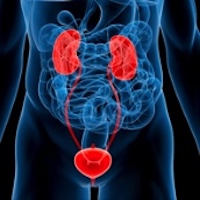Prostate cancer with cribriform pattern: Exclusion criterion for active surveillance?

Accepted: February 18, 2020
All claims expressed in this article are solely those of the authors and do not necessarily represent those of their affiliated organizations, or those of the publisher, the editors and the reviewers. Any product that may be evaluated in this article or claim that may be made by its manufacturer is not guaranteed or endorsed by the publisher.
Authors
Introduction: Following the 2014 International Society of Urological Pathology meeting, a rapidly growing body of evidence by several researchers has been demonstrating a poor prognosis in association with cribriform morphology. The aim of our study was to describe the presence of cribriform foci in specimens of radical prostatectomies and to evaluate whether demographic and clinical characteristics are associated with the presence of cribriform pattern.
Materials and methods: This cohort study was based on 70 radical retropubic prostatectomies specimens collected between 2012 and 2016 and evaluated for the association of the cribriform pattern with age, prostate-specific antigen at surgery day, Gleason on biopsy, Gleason after radical prostatectomy, extracapsular extension, vesicles invasion, margins, multiparametric magnetic resonance imaging, and post-operative radiotherapy.
Results; From the univariable analysis, biochemical prostatespecific antigen recurrence (p = 0.001), extracapsular extension (p = 0.003), pre-operative prostate-specific antigen (p = 0.017), vesicles invasion, (p = 0.038) and post-operative radiotherapy (p < 0.001) showed an association with the presence of cribriform pattern. There was also a significant difference of cribriform pattern and Gleason 7 in needle biopsy (p = 0.020) and cribriform pattern and Gleason 8 or 9 in radical prostatectomy specimen (p = 0.036).
Conclusions: In our study, the increase in preoperative prostate-specific antigen had a high association with cribriform pattern. Further evidence is needed to discriminate preoperative prostate specific antigen values that might potentially be associated with the presence of cribriform pattern. Raising our knowledge about the cribriform pattern can be an excellent opportunity to correctly identify and treat patients who will eventually die from prostate cancer, sparing treatment in those who will not.
How to Cite
PAGEPress has chosen to apply the Creative Commons Attribution NonCommercial 4.0 International License (CC BY-NC 4.0) to all manuscripts to be published.

 https://doi.org/10.4081/aiua.2020.3.235
https://doi.org/10.4081/aiua.2020.3.235




